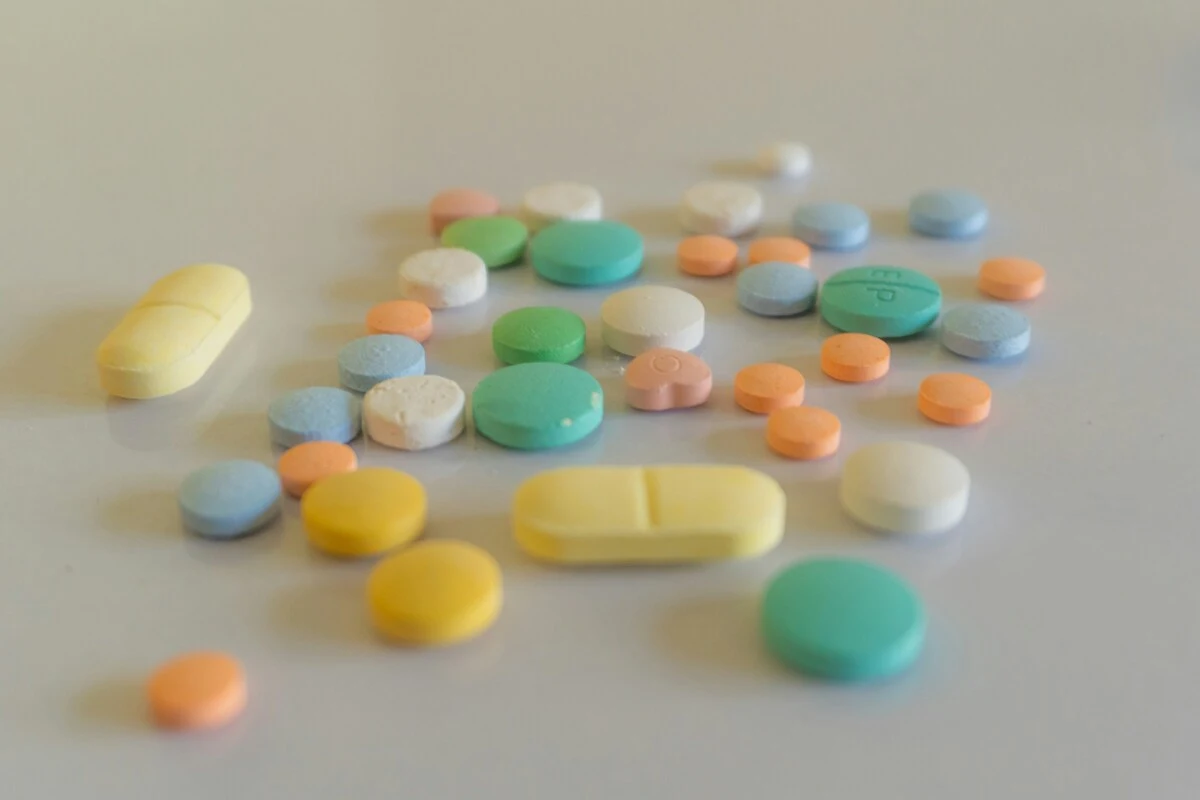Understanding Clonazepam Half-Life & How Long Klonopin Stays In Your System

- Clonazepam is a benzodiazepine medication that is often used to treat symptoms of anxiety disorders, panic disorders, and various types of seizures.
- The Klonopin detection window for testing varies with the procedure used. Blood testing, urine tests, saliva tests, and hair drug tests are all options.
- Long-term usage of Klonopin can result in dependence and withdrawal symptoms if abruptly discontinued. Always take the medicine under a physician’s supervision.
Clonazepam, also known by its brand name Klonopin, has an elimination half-life of around 30–40 hours. The half-life of a substance is the time it takes for the body to eliminate half of the initial dose. Clonazepam has a longer half-life compared to many other benzodiazepines. Therefore, it remains in the body for a more extended period. According to clinical data, clonazepam can be detected in urine for approximately 5 to 9 days after the last dose; however, this does not necessarily mean the drug remains pharmacologically active in the body for the entire period.
What is Clonazepam?
Clonazepam is a long-acting benzodiazepine that is FDA-approved for seizure disorders and panic disorder. Its use for conditions such as generalized anxiety disorder (GAD) is considered off-label and generally discouraged due to the risk of dependence with long-term use. Clonazepam is FDA-approved for panic disorder and seizure disorders; its use for generalized anxiety disorder is off-label.[1] The benzodiazepine medication was initially invented in 1960. However, it was made available for sale in the United States in 1970. Similar drugs include Ativan, Xanax, and Valium.
Klonopin is available in 0.5 mg, 1 mg, and 2 mg tablets, with dosing individualized based on the condition being treated, patient age, and response to therapy. When deciding on a Clonazepam dose schedule, follow your doctor’s directions.
In the United States, all benzodiazepines (Benzos) are controlled substances. Regrettably, there is widespread misuse of these substances. This leads to restrictions on their prescription and refilling practices.
How Does Clonazepam Work?
Klonopin is the brand name for clonazepam. It acts as a central nervous system depressant by enhancing GABAergic neurotransmission. One study suggests that the drug’s mechanism of action includes increasing GABA activation. [2] The neurotransmitter gamma-aminobutyric acid reduces overstimulation, producing feelings of calm and relaxation.
The drug’s calming and sedative effects can lead to psychological and physical dependence with long-term use or misuse. It is essential to use Klonopin responsibly because, despite its benefits, it can be addictive.
Clonazepam Pharmacokinetics
Clonazepam pharmacokinetics entails studying how the drug is absorbed, metabolized, distributed, and excreted.
Absorption
Following oral administration, the medication is quickly absorbed through the gastrointestinal tract. It reaches peak plasma concentrations within 1 to 4 hours. [3] This rapid absorption rate explains why the medication has such a quick onset of action.
Distribution
Clonazepam distributes throughout the body and crosses the blood-brain barrier due to its lipophilicity, exerting effects primarily in the CNS. The drug’s high lipid solubility allows it to easily penetrate the blood-brain barrier. This action results in the associated anticonvulsant and calming effects.
Metabolism
Liver enzymes primarily metabolize Clonazepam. The action is specifically carried out by cytochrome P450 isoenzyme 3A4 (CYP3A4). [4] The process involves converting Clonazepam into inactive metabolites that lack the efficacy of the original medication.
Clonazepam is primarily metabolized in the liver by CYP3A4 into 7-amino-clonazepam, its main inactive metabolite, which is commonly detected in urine drug tests.
However, the drug’s metabolic conversion can vary from person to person, depending on various factors, including liver function, age, genetics, and general health conditions.
Elimination
Clonazepam is primarily eliminated via the kidneys, with most of the drug excreted as inactive metabolites in the urine. Fecal elimination is minimal. To minimize the excessive accumulation of Clonazepam metabolites, exercise caution, particularly in patients with renal impairment. [5]
How Long Does Clonazepam Stay in Your System?
Clonazepam has a long half-life of approximately 30–40 hours and can be detected in urine for 5–9 days after the last use, depending on factors such as dose, duration of use, and individual metabolism.[6] The drug’s primary metabolite, 7-amino-clonazepam, is primarily eliminated in urine. The medicine is detectable in the bloodstream for at least 1 to 3 days following the last dose.
It can remain detectable in your hair for up to 90 days. However, because of the larger detection window, it’s not used regularly. Saliva tests also have short detection windows of 2 to 6 days, which is most likely because saliva is eliminated more quickly than other body fluids.
The prolonged presence of Klonopin in the system raises concerns about accumulation. This, in turn, affects dose recommendations.
What is The Dosing Frequency for Clonazepam?
Prescriptions and dosing schedules are personalized and depend on various factors. This includes your age, weight, previous medical conditions, and how your body responds to treatments. Starting doses for the elderly (over the age of 65) are typically quite modest.
Those with pre-existing diseases such as seizures, kidney, liver, or lung issues should take the medications exactly as prescribed by their healthcare professional. Clonazepam dosing in pediatric seizure disorders is determined by a physician and typically based on body weight, age, and seizure type, following specific pediatric dosing guidelines.
For panic disorder, the typical starting dose for adults is 0.5 mg, divided into two 0.25 mg doses daily.[7] Your doctor may recommend different amounts as needed, but the total dose is often no more than 4 mg.
When Should You Take Clonazepam?
To maximize the effectiveness and safety of clonazepam, the timing of the dose must be carefully considered. Of course, timing varies depending on the condition, and your doctor will always provide personalized medical advice for optimal results.
It is strongly recommended that patients take Clonazepam at the same time every day and set a routine. If you miss a dose, take it as soon as you remember, but do not double the dose. Taking a double dose of clonazepam after a missed dose may increase the risk of excessive sedation, respiratory depression, or other adverse effects.
How To Take Clonazepam
Clonazepam is available in various forms, including liquid, pills, and orally disintegrating tablets (ODT). You can take these with or without food. [8] If you’re taking the medication in liquid form, your pharmacist will most likely provide you with a plastic syringe to help you measure the proper dosage. Avoid using a teaspoon, since it may not accurately measure the amount.
If you are taking it in tablet form, take it with a glass of water and follow the dose directions. Clonazepam orally disintegrating tablets (ODTs) dissolve in the mouth but are absorbed via the gastrointestinal tract, not sublingually.
What are the Clonazepam Side Effects?
While Klonopin can help treat the issues mentioned earlier, it also has the potential for abuse, drug addiction, and harmful side effects. The medication’s adverse effects range from mild, such as fatigue, to life-threatening, such as respiratory depression.
Short-term Side Effects
Understanding Klonopin’s side effects is essential for using clonazepam safely. Here are some mild symptoms to look out for:[9]
- Lethargy
- Fatigue
- Sedation
- Drowsiness
- Impaired coordination
- Lack of balance
- Dizziness
Long-term Side Effects
Side effects of long-term Clonazepam use may include: [10]
- Withdrawal symptoms
- Problems with memory
- Trouble sleeping
- Ringing in your ears
Clonazepam Drug Interactions
Clonazepam reacts differently with various drugs. Central nervous system depressants, antidepressants, anticonvulsants, and additional benzodiazepines are among such drugs. These substances may slow or speed up Klonopin’s processing time. As a result, their presence influences Klonopin’s elimination time, potentially increasing the dangers or altering its effects.
For example, combining Klonopin with opioids, alcohol (CNS depressants), or alprazolam (another benzodiazepine) is extremely risky. [11] This is because the combination can create major negative effects. Such symptoms may include significantly depressed respiration, dangerous degrees of sedation, coma, or even death. It is best to seek medical advice from a healthcare expert before attempting such combinations.
Other combinations, such as carbamazepine (an anticonvulsant), can reduce the effectiveness of clonazepam. It achieves this by accelerating the metabolism of Klonopin through the action of liver enzymes. Flumazenil is a benzodiazepine receptor antagonist used in benzodiazepine overdose; however, it is typically avoided in chronic benzodiazepine users or mixed overdoses (e.g., tricyclic antidepressants) due to the high risk of precipitating seizures or withdrawal. Furthermore, exercise caution when using it to minimize the risk of life-threatening seizures. [12]
Addiction Risks and Safety Considerations: Can I Detox From Klonopin?
While clonazepam is effective when used short-term, tolerance can develop with long-term use, especially in treating anxiety, potentially reducing its effectiveness over time. If the body becomes accustomed to the drug’s active chemicals, it no longer provides the anticipated relief from panic attacks, seizures, and specific conditions.
Even worse, prolonged use might result in substance abuse and addiction. That is why Clonazepam is classified as a DEA Schedule IV controlled substance, indicating its potential for abuse and dependence. [13]
If you or someone you know is experiencing a Klonopin overdose, get emergency medical attention. To alleviate the drug’s withdrawal effects, your doctor may suggest supervised inpatient or outpatient tapering or addiction treatment. A medical detox program is especially important if you have developed a substance use disorder or polysubstance use.
Frequently Asked Questions about Clonazepam Half-Life

